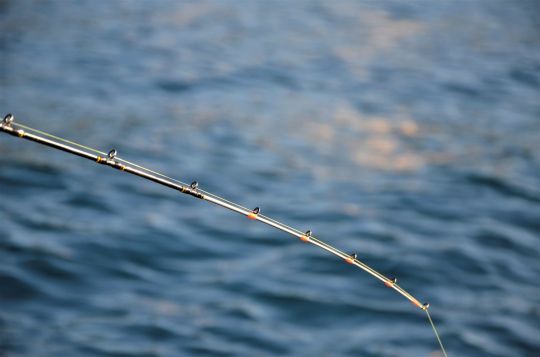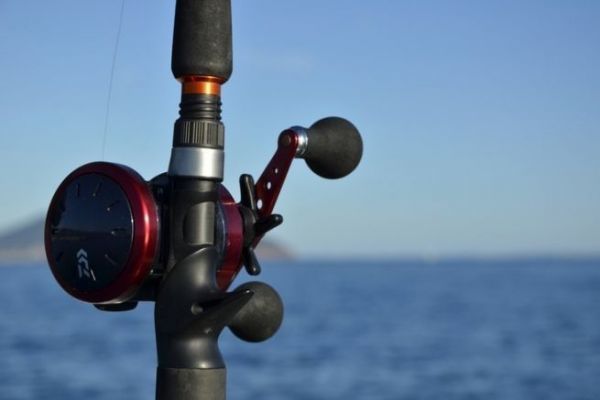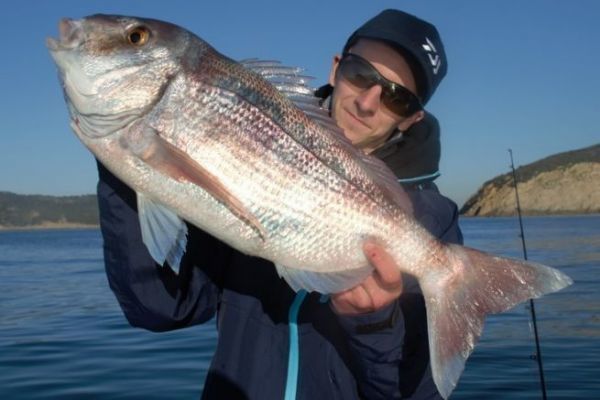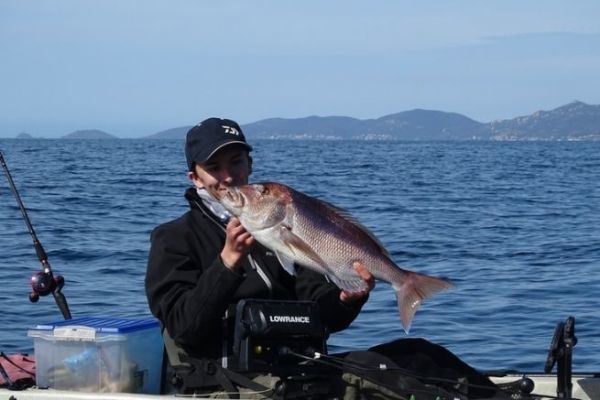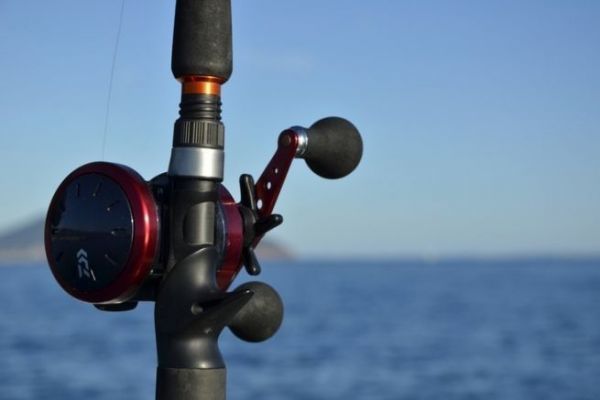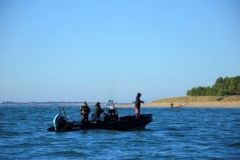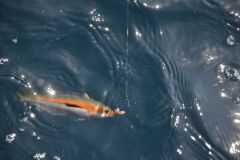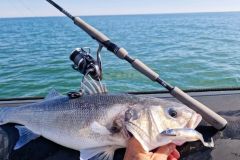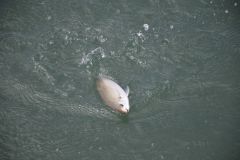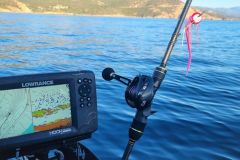A progressive cane
If you've ever fished for sparids with lures or baits, you've probably noticed their distinctive head strikes. They head-butt in order to get off the hook or break the line. To avoid this type of mishap, a rod with a very progressive action helps to dampen the jerks and prevent too much tension being applied to the line. Relatively long rods are also interesting for making wide animations imitating a fleeing cephalopod.
The ideal rod is about 2.10 m long, with a parabolic action and a very supple tip to reduce the tension on the strike so that the fish doesn't notice the subterfuge. Casting rods are obviously the most comfortable to use, especially if you're fishing at depths of over 60 metres.
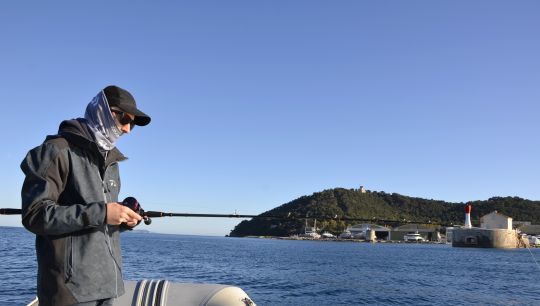
The right reel
A reel for inchiku fishing has two main functions: to handle the fight and to allow easy animation. The capacity of the reel is not very important, as inchiku fishing is rarely done at depths of over 150 metres. Your reel can be light, an important asset especially during long fishing sessions. The ratio of a reel for inchiku should be high, so as to recover the slack quickly after a long pull with the rod.
The drag doesn't need to be very powerful - you don't need 20 kg of drag to fish for pike-perch, denti or sea bream. However, it does need to be as precise as possible so that it releases a small amount of line during head strikes to reduce the risk of breakage. A fluid drag combined with a parabolic rod will be your best chance of never breaking in a fight.
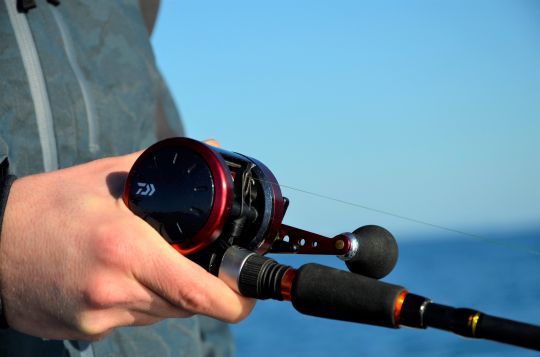
The braid
There are two schools of thought when it comes to using braid: casting and vertical fishing. When you want to cast your inchiku to fish away from the boat, you're mainly looking for a gliding animation, even with a very heavy inchiku. A fairly thick braid will create a banner which will drastically slow down the animation and descent phases, which can be very effective on difficult fish.
When it comes to pure vertical fishing, the aim is to have as little line as possible and always be in contact with the lure to strike at the slightest touch. Of course, your choice will have to be made before a fishing trip, but you can take a spare reel with you, which you can change if you notice that one technique works better than another.
